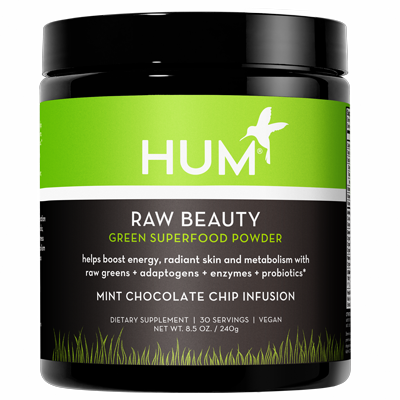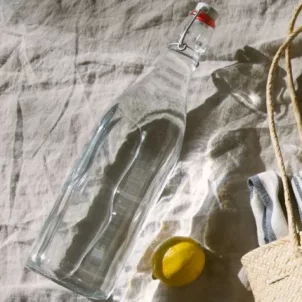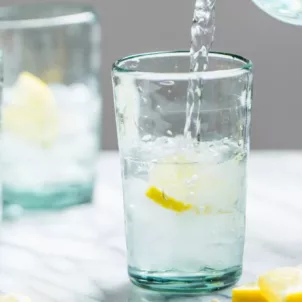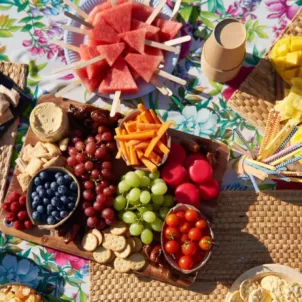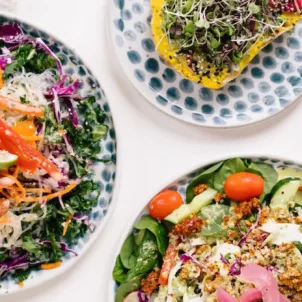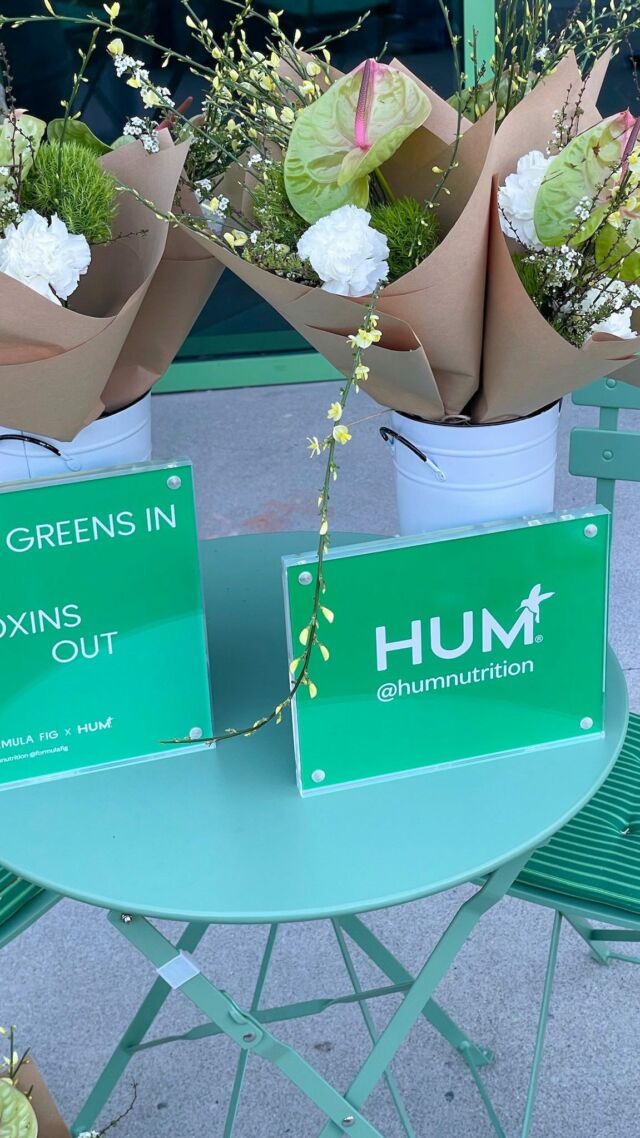Calling all coffee lovers! Is coffee good for you? We look at the science to find out.
Yes, it’s known for that burst of energy that some people get headaches, or can’t get out of bed, without. But have you ever thought more closely about the question, Is coffee good or bad for you? According to several studies, it turns out your morning mug (or four) actually is. Good news: The World Health Organization recently dropped coffee’s status as potentially cancer-causing. Next, according to Harvard’s School of Public Health, there are actually some serious health benefits to your tried-and-true daily iced coffee that you sip even in subzero temperatures. Today, we’re delving into the research in detail and exploring some of the reasons coffee might be bad for you, depending on your health conditions. Plus: Don’t miss out on some popular coffee trends that are brewing at the moment.
Is Coffee Good For You?
An estimated 54 percent of American adults drink coffee every day (the average answer is “I always drink three cups of coffee in the morning”). The Harvard School of Public Health found that drinking up to six small cups of coffee is considered safe, under most circumstances, and delivers some major health benefits. For reference, the caffeine percentage in coffee, in your everyday 8-ounce cup of brewed coffee, is 96 milligrams (64 milligrams in a shot of espresso), and it’s safe to have about 400 milligrams of caffeine per day.
So what does caffeine do to your body? Some of its winning health qualities: It can reduce your risk of heart disease, may lower your chances of developing type-2 diabetes by 6 percent, could protect against gallstones, and can even reduce your risk of Parkinson’s disease.
A 2017 meta-analysis supports the potential cardiovascular benefits, liver health benefits, and even cognitive benefits of moderate coffee intake, according to Gaby Vaca-Flores, RDN, CLE, the education specialist at HUM. “Of course this doesn’t apply to pregnant and breastfeeding people,” she adds, but more on that later. On top of those, regular coffee intake could potentially decrease your risk of depression, thanks to its activation of dopamine in the brain.
Is Coffee Bad For Cholesterol?
This is one potential health question that comes up around the subject of coffee and cholesterol. Some studies suggest that a substance in coffee called cafestol can raise your LDL (bad) cholesterol. A typical coffee bean contains about a half percent of cafestol. If you don’t filter your coffee, cafestol will make it into your bloodstream. In a two-year Norwegian study, coffee increased serum cholesterol by eight percent in men and 10 percent in women. Simply filtering your morning brew reduces the amount of cafestol you drink.
Who Should Cut Back On Coffee?
Always remember: One size doesn’t fit all. Rather than relying on research only of the reasons why coffee is bad for you, or why coffee is good for you, conversely, listen to your body and see how you react to coffee individually. If it makes you anxious or activates symptoms of any mood disorders, prevents you from sleeping, or wreaks havoc with your digestion, especially if you have heartburn or acid reflux, we suggest decreasing or eliminating your intake to see whether these symptoms prevail.
Some people with certain health conditions like high blood pressure should cut back on their coffee intake, regardless of how coffee affects them, since caffeine can elevate blood pressure levels, Vaca-Flores explains. This also applies to you if you’re pregnant or breastfeeding, she adds. The American College of Obstetricians and Gynecologists (ACOG) recommends that pregnant or breastfeeding people limit caffeine intake to 200 milligrams per day, which is about one 12-ounce cup of coffee to jump-start your day (and recover from a sleepless night, if you have pregnancy insomnia or a newborn). If, on the other hand, you don’t fit into the above conditions and still love your daily cuppa—and what it does for your energy levels—check out the following coffee trends and whip up our Superfood Frappuccino recipe below.
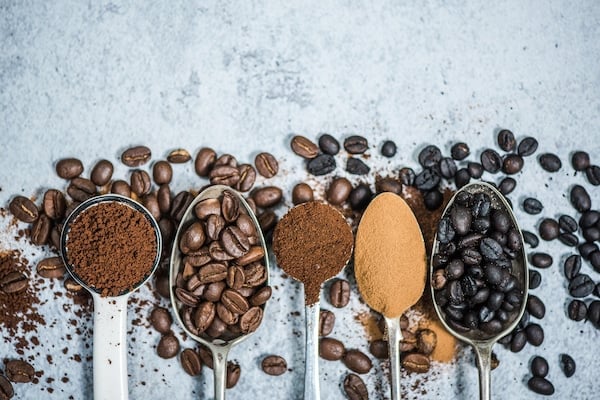
What’s Brweing: 3 Coffee Trends That Are Causing Some Steam
Drip Coffee
Drip coffee is all the rage right now, despite it being popular since the invention of the coffee filter by German housewife Melitta Bentz around 1900. (A patent was granted on June 20, 1908.) But a lot has happened in the century-plus since. At any rate, here’s how to make drip coffee:
Grind enough beans for one cup. Pour them into a filter, place your mug underneath, and slowly pour hot water over it. Since beans have unique tastes, this process can really unlock flavors. Skilled baristas take their time and offer prime drip coffee at a price. If you’re fine with waiting in line and paying extra, then give drip coffee a go.
Verdict: We like the idea of getting a break from our hectic lives and maybe meeting some other caffeine fiends in line.
Nitro Coffee
With summer in full swing, why not opt for a cold, nitrogen-infused coffee? Nitro is stored in massive kegs and served out of tap (like beer). According to some, its faster absorption rate will kick you back into shape at no time. Compared to cold brew, it’s crisper, slightly sweeter, and creamier. However, it comes at a premium price.
Verdict: Great on the eyes and taste buds and fast to kick in, but a bit pricey.
Bulletproof Coffee
If you think that Silicon Valley only produces tech giants like Uber, Apple, and Google, think twice. Dave Asprey, founder of the Silicon Valley Health Institute and creator of Bulletproof Coffee, has made this concoction the caffeinated drink du jour. His recipe mixes coffee with grass-fed butter and brain octane oil. Health claims include improved cognitive performance and weight loss, but we haven’t seen any studies to confirm them yet. Nevertheless, we love innovation. The taste is surprisingly not bad. But if you’re a coffee fanatic, you won’t be able to taste the provenance of the original brew anymore.
Verdict: At five bucks a cup, it won’t be part of our daily routine. Instead, we’ll drink it occasionally as a treat.
Superfood Frappuccino
1 min
1 min
1
INGREDIENTS
- 1 cup cold brew coffee
- 1 serving Raw Beauty
- 1/2 cup organic almond-milk creamer
- 1 tbsp MCT oil
- Optional: fresh mint
SUPPLIES
- Blender
INSTRUCTIONS
- Blend together. Add ice for texture and to make it extra cold.
- Garnish with fresh mint.
